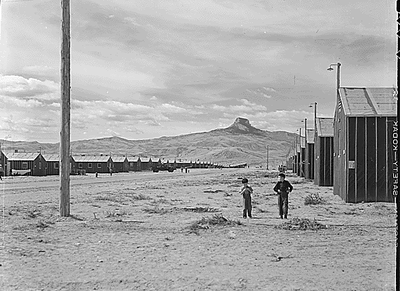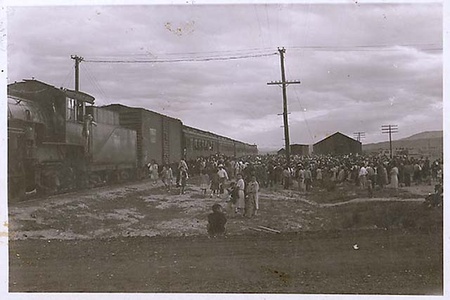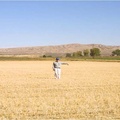I remember the spring of 1942.
I had just turned 9 years old and the armed United States military came to our neighborhood in San Francisco. The guards escorted my father, mother, brother, me, and all others of Japanese ethnicity in the area out of our homes and placed us into buses. My grandparents and other relatives were also on the buses.
No one explained where they were taking us, but we found ourselves at the Los Angeles County fairgrounds in Pomona, California, where we were placed in temporary housing that consisted of one room per family. We were fortunate in that our room was a regular office-type room. Others were forced to sleep in horse stalls with mattresses stuffed with hay.
After a few months in Pomona, we were placed onto a train guarded by the U.S. military. We were told to pull down the shades and never look out the windows for the duration of the trip. We had no idea where we were headed or how long we would be traveling.
I remember riding the train and it stopping at a siding in the wilderness after several days. It was Aug. 25, 1942, and we had arrived at our final destination. The weather was very windy and very cold for late summer. As we got off the train, we were surrounded by even more guards and herded onto the open back of an Army truck. The trucks made their way across dusty roads, through a barbed wire gate and into a makeshift city made up of many tar-papered barracks.

Looking west on "F" street, main thoroughfare of this relocation center, with its namesake "Heart Mountain" looming in the background. Photo by Tom Parker. (Source: Record Group 210: Records of the War Relocation Authority, 1941 - 1989. The U.S. National Archives and Records Administration)
We were at Heart Mountain, Wyoming, a barren, windy, cold and desolate place located between Cody and Powell.
Our family was assigned to Block 14, Barrack 22, Unit C (I call it “Cell C”). It was a stark room measuring 20 by 20 feet square. There were four single military beds as well as a pot-bellied stove. The room was not insulated and the wind whistled through the cracks in the siding. This room was our home for the next several years—we were an entire family living in one room with no dividing walls or partitions.

A man in an overcoat stands in the snow at Heart Mountain concentration camp, Wyoming, Winter 1944-1945. (Gift of Mori Shimada, Japanese American National Museum [92.10.2AN])
That winter according to weather records, the temperature sank to a record minus 28 degrees F. We were still in California clothing and not prepared for this extreme climate. We did our best to keep warm using coal in the stove, but it was difficult keeping up with the very cold wind. We had to go outside to use the community bathroom. In summer, the temperature climbed to 96 degrees and staying cool was challenging.
Life in the camp (some called it a concentration camp of 14,000 internees surrounded by barbed wire fences and guard towers) settled down to a very dull routine—schools for the young, camp work for some and socializing for others. The food was terribly boring and unappetizing. Sometimes we had fried rice for several consecutive meals.
Life was routine until grandfather became seriously ill with cancer, was not treated properly in camp and suffered a very difficult passing. I remember that a mortuary in Montana came and took his body to Billings for preparation. The body was brought back to camp for the funeral service in a barrack and then returned to Montana for cremation. The final remains were returned to our family at the camp and were ultimately taken to the family plot in San Francisco.
After a few years at Heart Mountain, there came a time when the camp administration allowed some internees to sign out and visit Cody and Powell for a day. This was on a non-escorted, trust basis with the internees promising to return to camp by nightfall. What happened next was the most memorable and disturbing recollection of life at Heart Mountain.
I can remember my father taking us to Cody for a short visit to get away from camp and try to find some decent food for a change. I vividly remember walking down Sheridan Avenue; it was clear many locals did not want us there. So we returned to camp dejected about how the local residents treated us.
We finally departed from Heart Mountain on June 28, 1945. We tried resettling in Salt Lake City, but eventually returned to San Francisco. Our belongings left behind in San Francisco had not been well stored or protected and we suffered losses to our possessions.

Large group of people gathered next to a train, possibly for resettlement from Heart Mountain concentration camp, Wyoming, 1945. (Gift of Mori Shimada, Japanese American National Museum [92.10.2AT])
© 2012 Sam Mihara



